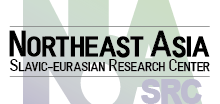This year's Association of Borderlands Studies (ABS) annual conference was held on April 8-11, 2015, at Portland, Oregon. Participants from all over world came to participate in this three-day conference that consisted of 53 panels.
Speakers and discussants gathered together to talk about a wide range of themes at this year's annual conference. Here are some reflections of this year's conference.
On Thursday morning, Ricardo Gomez and his research team from the University of Washington iSchool organized a panel titled, "Photo Stories of Life at the Border". This panel introduced the research project conducted by Ricardo and his research team, which consists of participatory photography with Hispanic migrants at the U.S.-Mexico border to facilitate and stimulate participation and reflection on immigration and information. At the panel there were various posters that introduced their work. One of the important features of this project was that Prof. Gomez puts the camera in the hands of the immigrants, asks them to take photos within a very loose parameter and conducts discussions about the photos with the person who took them. The interesting finding that he mentioned in the presentation was that often times the photos portray something that even the subject did not realize at first, which becomes a means to facilitate a dialogue on the everyday lives of the immigrants. As "pictures paint a thousand words" so do photos, and it provides for a powerful tool for us to get a glimpse into the thought processes and the experiences of immigrants at the U.S.-Mexico Border. This kind of work using photography to stimulate participation on immigration is innovative and the methodology could be applied to other cases around the world.
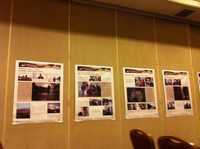
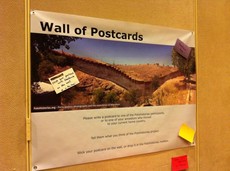
One of the highlights of this year's conference was the number of presentations and panels on Asia. The panel that I presented in titled, "Asian Borders in the Current Era" was organized by Guadalupe Correa-Cabrera, which consisted of presentations on migration in South Korea and Japan by Naomi Chi, borders of North Korea by Guadalupe and India-Bangladesh by Kathy Staudt. The first presentation was on the old and new immigrants in the two countries and the inclusive and exclusive characteristics of the immigration policy. The two presentations that followed by Guadalupe and Kathy were reflection pieces based on the field work of the two speakers that visited their respective border areas. All of the borders represented in this panel were arbitrarily drawn by various world powers, which have then been reinforced by globalization. However, we must also realize that they are people who live at these borders, who are affected by the borders, and who must be heard. Therefore, such comparative studies are crucial in learning from various cases around the world. The tentative plan is to continue this dialogue in the next ABS conference in Reno.
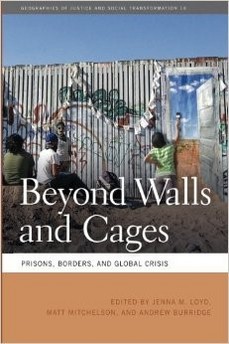 Special mention goes to the book and best student paper awards at the conference. The global COE programme "Reshaping Japan's Border Studies" at the Slavic Research Center, Hokkaido University led by Akihiro Iwashita had held four summer school's for graduate and post-doc students between 2010-2013. The participant of the first summer school, Dr. Andrew Burridge, along with his colleagues Jenna Loyd and Matthew Mitchelson, received this year's book award for their edited book, Beyond Walls and Cages: Prisons, Borders and Global Crisis. The book deals is an anthology that looks into the everyday lives of those who cross the U.S.-Mexican border and the humanitarian work that is carried out at this border. Also, the award for best student paper went to Dhananjay Tripathi of South Asian University, who participated in the 2nd summer school. His paper, "Creating Bordes in Young Minds: the Pedagogical Projection of Enemy- A Case Study of Indian and Pakistani School Textbooks" which dealt with the textbook problems in India-Pakistan relations. His insights to the textbook issues in India-Pakistan can possibly be extended to other textbook issues in other regions such as East Asia. The main objective of the summer school was to foster young talents and establish networks with other border studies community and it was truly a proud moment to see these young scholars being recognized for their hard work.
Special mention goes to the book and best student paper awards at the conference. The global COE programme "Reshaping Japan's Border Studies" at the Slavic Research Center, Hokkaido University led by Akihiro Iwashita had held four summer school's for graduate and post-doc students between 2010-2013. The participant of the first summer school, Dr. Andrew Burridge, along with his colleagues Jenna Loyd and Matthew Mitchelson, received this year's book award for their edited book, Beyond Walls and Cages: Prisons, Borders and Global Crisis. The book deals is an anthology that looks into the everyday lives of those who cross the U.S.-Mexican border and the humanitarian work that is carried out at this border. Also, the award for best student paper went to Dhananjay Tripathi of South Asian University, who participated in the 2nd summer school. His paper, "Creating Bordes in Young Minds: the Pedagogical Projection of Enemy- A Case Study of Indian and Pakistani School Textbooks" which dealt with the textbook problems in India-Pakistan relations. His insights to the textbook issues in India-Pakistan can possibly be extended to other textbook issues in other regions such as East Asia. The main objective of the summer school was to foster young talents and establish networks with other border studies community and it was truly a proud moment to see these young scholars being recognized for their hard work.
Last but not least, I must mention the active participation of UBRJ and JCB members. Minori Takahashi presented his work titled, "The Boundaries of EU Norms" with respect to whaling by the indigenous people in Greenland. Hironobu Yamagami and Hiroyuki Ohnishi from JCBS presented their work, "In Whose Interest? Postwar Handling of Wartime Postal Savings in Japan," and "Characteristics and Challenges to the Japanese Nationality and Immigration Administration," respectively. I still remember the first ABS Conference in Reno, Nevada in 2010, and since then we have worked hard to increase the Asian representation at the conference, but this year we demonstrated that the Japan chapter of ABS is now a significant part of the association. We hope to continue to contribute to the ABS conference through the activities of the Japan chapter, which will be found later on this year.
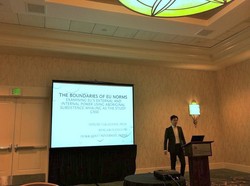
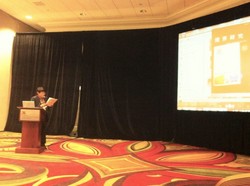

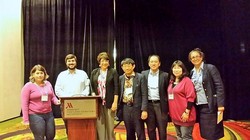
I myself being from the Pacific Northwest, Portland felt like home--however, this was not probably only due to the similar climate and natural surroundings that the Pacific Northwest shares but also due to the warm hospitality of the organizers. Heartfelt thanks to ABS president Martin Van der Velde, vice president and section coordinator Akihiro Iwashita, and WSSA for another wonderful conference this year. (Written by: Naomi Chi)
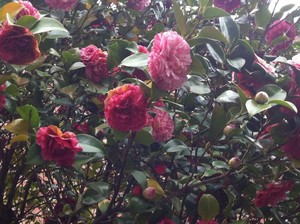

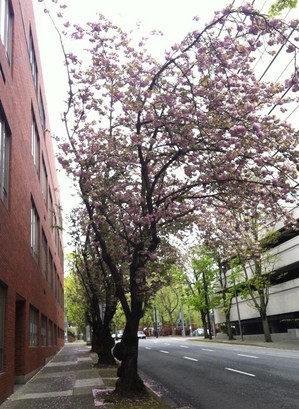

 Eurasia Unit for Border Research (Japan)
Eurasia Unit for Border Research (Japan)




